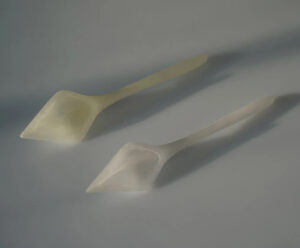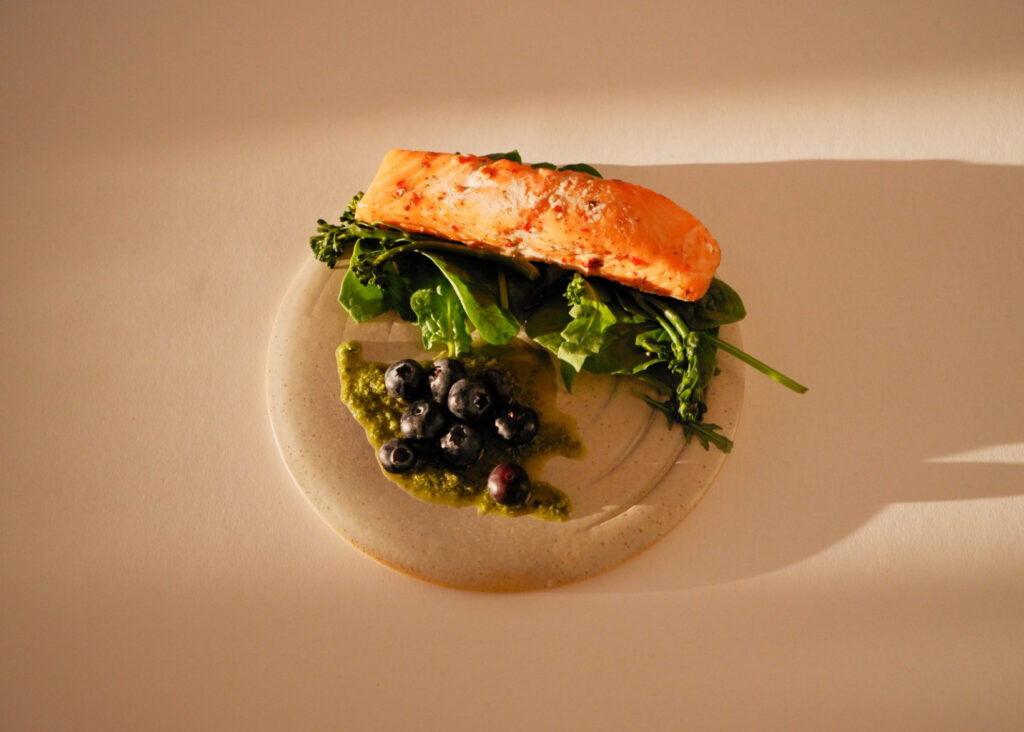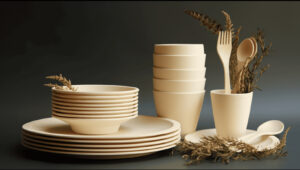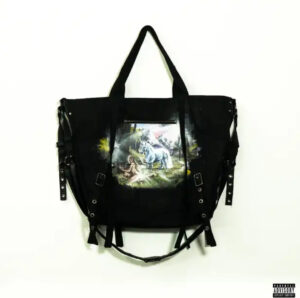
In the sterile, utilitarian environment of space travel, the rituals of daily life are stripped down to their most functional components. Eating, once a source of comfort and social bonding, becomes a technical act: squeeze, swallow, seal. Meals are encased in sterile plastic pouches; utensils are designed purely for containment, not enjoyment. Yet what if dining in space could echo the cultural and emotional resonance it holds on Earth?
Latvian designer Klinta Locmele believes it can. Her speculative design project, titled “Zero,” challenges the paradigm of mechanized consumption aboard spacecraft, offering instead a poetic, tactile, and Earthlike experience. Developed as her final-year thesis at Chelsea College of Arts’ Product and Furniture Design program, Zero is not a technological breakthrough but a humanistic reimagining—space-age tableware that evokes ritual, tactility, and even playfulness.
At the intersection of design fiction and ergonomic innovation, Zero comprises several key pieces: a spike-covered plate, a grooved spork, and a tentacled teapot—each sculptural, each alien, and yet deeply grounded in anthropological logic. Rather than deny the strangeness of dining in microgravity, Locmele embraces it, offering astronauts a toolkit not just for eating, but for feeling connected to food, form, and their own humanity.
Rethinking Space Consumption: From Squeeze Tubes to Table Culture
The current model for space dining is, in Locmele’s words, “efficient but joyless.” Since the days of early NASA missions, astronaut meals have largely revolved around low-mass, high-calorie food packets, consumed individually in controlled portions. While this approach satisfies nutritional needs, it does little to honor the social, emotional, or sensory dimensions of eating.
Locmele’s Zero collection is speculative, but it is also a critique—a challenge to the orthodoxy that functionality must come at the expense of sensory engagement. “My goal,” she explains, “was to explore whether dining in space could offer more than just sustenance—whether it could be pleasurable, communal, and even beautiful.” With her eccentric, biomorphic utensils and serveware, she invites astronauts to participate in the meal as a tactile, shared ritual.
The Plate of Spikes: Containing and Curating Food in Zero-G
Perhaps the most visually arresting piece in the Zero collection is the spiked plate, a dish whose interior is covered in sharp, irregular peaks and valleys. At first glance, it resembles an artifact from an alien civilization. But its logic is simple and elegant: in microgravity, liquids and loose food particles float. The spikes provide structural interruptions—miniature crags that trap morsels in place through surface tension and friction. This allows food to be presented more artfully, rather than being locked into single-use compartments.
More than just a containment solution, the spiked plate brings food into a three-dimensional, sculptural dialogue with the diner. Astronauts can navigate the terrain with a specially designed grooved spork, turning eating into a slow, engaged process. Texture and movement replace pressure and gravity as the central components of the dining act.
The Grooved Spork: Precision Meets Play
Traditional forks, spoons, and knives lose much of their effectiveness in space, where pressure and friction are unreliable. Locmele’s grooved spork reimagines the eating tool as both instrument and interface. Carved with deliberate ridges, the spork is designed to interlock with the plate’s spiked terrain, enabling the user to gently trap and extract food without causing it to float away.
The grooved spork is not just a compromise—it’s an expressive object in its own right. Its asymmetrical shape and matte finish evoke artisanal cutlery rather than institutional tools, reinforcing Locmele’s belief that design should honor the emotional complexity of even the most mundane acts. In space, where touch becomes a key sensory anchor, the spork’s tactile qualities—its weight, its texture, its hand-feel—become central to the experience of eating.
The Tentacled Teapot: Ritual in Orbit
If the plate and spork demonstrate Zero’s attention to containment and tactility, the tentacled teapot pushes the concept into the realm of speculative ceremony. This object, somewhere between a sea creature and a science fiction prop, is meant to serve warm liquids in controlled amounts. The multiple flexible “limbs” on the pot allow for small nozzles to release tea or broth into the air, where they can be caught by mouth or vessel.
Why a teapot? Because drinking tea is not merely hydration—it is a cultural act of comfort, slowness, and reflection. In a space station, where routine becomes clinical and monotony constant, the act of sharing tea can reintroduce mindfulness and togetherness. The teapot, then, is not just a tool but a catalyst—a proposal for intimacy in an otherwise isolated context.
Design as Empathy: A New Frontier in Astronaut Experience
What makes Locmele’s Zero collection stand apart from other space-centric design concepts is its commitment to empathy. Rather than view astronauts as biological machines in need of fuel, she approaches them as full human beings: lonely, pressured, often dislocated, and in need of moments of connection. In this framework, the table becomes a sanctuary—a rare space for contemplation and culture amid the relentless machinery of survival.
Her speculative tableware thus operates on multiple levels. It is functionally plausible. It is aesthetically provocative. But more importantly, it is emotionally intelligent. Every groove and curve is calibrated to offer sensory cues and cognitive comfort—hints of Earth in an environment that so often denies it.
Speculative Futures: Designing for the Next Space Age
Locmele’s work arrives at a crucial moment in the narrative of space exploration. As private companies like SpaceX, Blue Origin, and Axiom Space usher in the era of commercial and civilian spaceflight, the question of quality of life aboard spacecraft becomes more urgent. No longer will space be the domain of elite-trained scientists alone. In the future, space tourists, artists, researchers, and civilians will inhabit orbital and lunar environments for extended durations.
This shift demands a new approach to design—one that balances hard science with soft systems, engineering with art, and utility with humanity. Zero is a prototype for this new philosophy. It doesn’t aim to solve the grand logistical challenges of colonization or propulsion, but it does address the daily psychological pressures of living in the void.
From the Stars, Back to the Table
In many ways, Klinta Locmele’s Zero collection is a return to first principles. Before rocket engines and satellite networks, before modules and mission statements, there was the table—an elemental space of gathering, nourishment, and belonging. By reintroducing this idea into the context of space, she suggests that our journey into the stars need not be one of complete estrangement. We can carry small pieces of Earth with us: a textured plate, a spork with grooves, a teapot that feels like a gesture of care.
Zero gravity doesn’t have to mean zero ritual. Through speculative design, Locmele shows us how the most human acts—like sharing a meal—can be reimagined not just to survive in space, but to flourish.
No comments yet.









